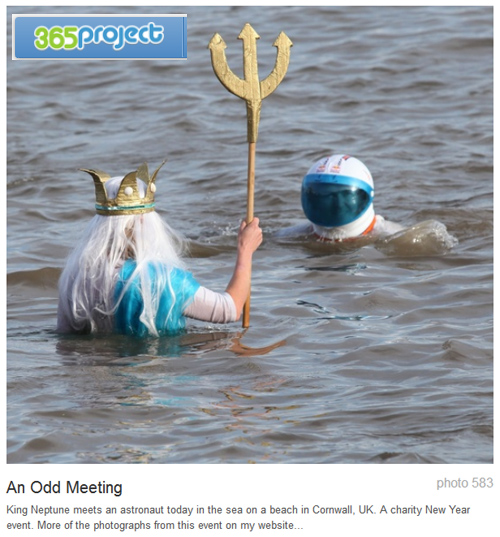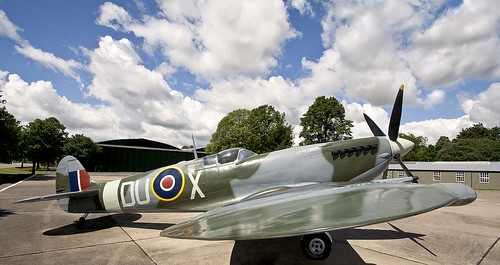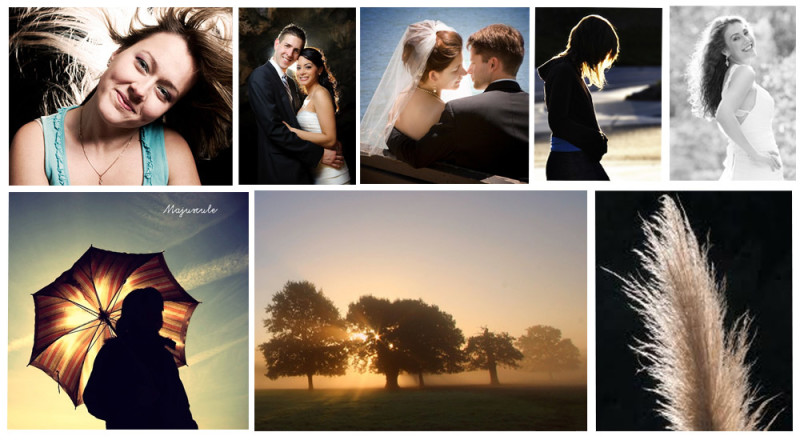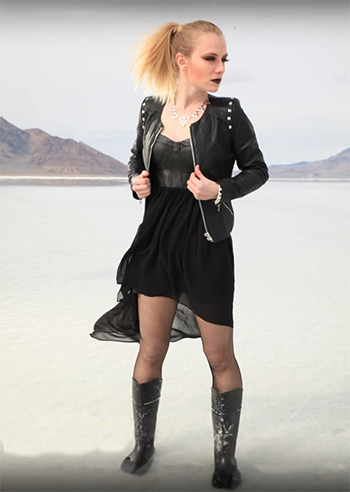
Cornish vista
Think about how to get the best out of your sky.
Cornish Vista • By Netkonnexion on 365Project![]()
Getting the sky right is important.
With the holiday season approaching we want our holiday photographs reflect the happy memories. All too often the sky is over-white, washed out or blown-out. There are a number of techniques you can use to get the sky right, in camera and in post processing.
What are you really looking for in a good sky? Deep blues for the sky, fluffy white clouds and well defined horizons are the ideal situation. To get them like that in the camera you have to pay attention to the time of day, the type of sky, the weather and have a sense of drama. Here are some ideas to help you…
Polarizing Filter
One of the photographers important tools for sky photography is the polarizing filter. It is a glass or composite material that is set into the inner of two metal rings. The first ring screws directly to the front of your lens. The other rotates inside the screw ring. The filter itself cuts out some of the wavelengths of light. You turn the ring with the filter mounted in it so that it can be set for maximum effect. The filter action reduces the glare and haze associated with reflective surfaces like water and glass. Amazingly it also deepens the blue in the sky. So what we see in the photograph is a sky that is darkened with emphasised blues and the air has a crispness and clarity. These effects are not reproducible in post-processing software. It is invaluable to have this effect in camera and will really liven up the drama of the sky.
Critical view-line
If you gaze out across a wide open sky on a bright sunny day you will notice that the blueness of the sky is not uniform. It is a deeper blue in places and a whiter blue elsewhere. In fact the sky gets to be a deeper blue if you are facing away from the sun. It is at its deepest blue at the opposite end of the sky from the sun. So where you can, shoot with the sun at your back.
Of course having the sun at your back is not always possible. A good rule is not to let the sun be in front of you. If it is at your shoulder (90 degrees to your shot) it will still allow you to get a reasonable blueness in the sky. If you have to shoot with the sun in front of you, even if at a wide angle, the blues will start to whiten. The more you are shooting toward the sun the more the sky will wash out.
The mid-day washout
During the middle of a sunny day the sky will be at its most washed out. As the sun is at its highest at this point you should avoid taking photographs if you can. The more the sun falls toward the horizon the more the atmosphere will act as a natural filter and increase the blues at the opposite end of sky. The middle of the day is also bad for photography because the sun being overhead means that objects on the ground have little shadow around them. This gives the landscape a flat and unappealing look. Washed out skies and flat appearance at ground level makes convincing photography difficult!
Use an ND graduated filter
Neutral density filters are great. They are fun to use and give you back some of the blueness in the sky caused by over brightness. They don’t enhance the blueness like the polarized lenses. They are a way of cutting the light down so its intensity is reduced.
Without an ND filter the sky will tend to be over-bright, or the ground will tend to be too dark on a bright day. The graduated ND is an ideal tool for helping to balance the light levels. A full ND filter will reduce the incoming light right across the lens. However, a graduated ND filter allows the full amount of light to enter the lens from the lower half – which keeps the foreground bright. On the upper half of the filter (pointing at the sky) the neutral grey graduates from the very light across the middle to its darkest at the top of the filter. You place the beginning of the neutral grey on the horizon and then the grey graduates darker up the filter so the most washed out or over-exposed parts of the sky at the top of the picture are the parts with the most reduced light levels.
It is worth remembering that you can use both an ND graduated filter and a polarizing filter. However, also remember that each time you put a glass element in the line of light you will be reducing the light that can get into the camera. So remember to adjust your exposure to compensate for the additional glass.
The use of ND filters helps to bring out the clouds too. Brightness in clouds can be pretty harsh, especially if they are very dense. This tends to make them featureless. The use of ND filters for clouds (an ND 2 or 4 – the lowest filter levels) will help to reduce the brightness and enhance the contrasts in the darker parts of the cloud. This brings out its features and helps the cloud to take on a little depth.
Post processing sky enhancements
In post processing you can do a number of things to enhance your sky. However, after years of working on my skies I know that you can get better results in camera… try that first.
On trick to enhancing a washed-out blue sky is to use a saturate tool. Simply wipe the tool across the blue of the sky to deepen and lift the crispness of it. The saturate tool in most image editing applications tends to turn sky blue to turquoise blue. Don’t use full saturation. Set your saturation tool to between 10% and 20% and wipe it several times rather than one heavy wipe. With most tools/brushes it is better to use low exposure/opacity rather than be heavy handed. Not only is it more controllable but you can also build up to a reasonable blueness without over-doing it.
You should watch out that you do not wipe the saturate tool over the clouds. You will find that the clouds look white, but contain a high blue component. If you saturate them they turn blue to the eye – which looks highly unrealistic.
The trick to increasing the contrast in clouds is not the saturate tool. It is to deepen the grey of the darker parts of clouds using the burn tool. The burn tool darkens a colour by increasing its black component. Again, with the burn tool use a reduced exposure. I like to work with about 15% in clouds. Set the tool to mid-tones so the grey parts of the cloud don’t turn black. The idea is to increase the contrast not to give the clouds harsh deep lines – that would hardly match with the surrounding blue sky.
Blue sky thinking
If you really want to get the best skies then work later or earlier in the day to get lower wash-out levels in the sky. Make sure that where you can shoot away from the sun = especially toward the horizon with the sun at your back. Where brightness levels are high and you have to shoot you can reduce the wash-out with polarization and ND grad. filters. You can also post process the skies after your shoot, but this is not as easy as it sounds.
True blue-sky thinking is done before you take the shot. Deploy all the suggestions above and your skies will be blue. Have a happy holiday.
Start Photokonnexion email subscription now!
Photokonnexion Photographic Glossary – Definitions and articles.
Light and Lighting – Resource pages on Photokonnexion
A simple introduction to polarizing filters
Definition: Neutral Density Filters
A very quick tip about filters
Getting started with filters
Filters – Some Reasons To Love Them
post processing








